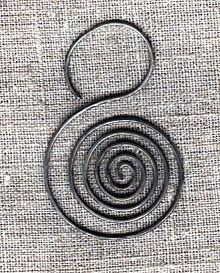 | ||
The Severians or Severyans or Siverians (Russian: Северяне; Ukrainian: Сiверяни; Belarusian: Севяране) were a tribe or tribal union of early East Slavs occupying areas to the east of the middle Dnieper river, and Danube. They are mentioned by the Bavarian Geographer (9th century), Emperor Constantine VII (956-959), by Khazars ruler Joseph (c. 955), and in the Primary Chronicle (1113).
Contents
Ethnonym
The etymology of the name of Severians is uncertain. One theory propose derivation from the Slavic word for "north" (sěver; men of the north), but the Severians never were the northernmost tribe of Slavs. Another theory proposes Iranian derivation from the name of the Sarmatian tribe Seuer, with seu meaning "black". Some scholars argued that the Yehudah called Sawarta from the Kievian Letter (c. 930), written in Hebrew as SWRTH (read either as Sur'ata or Sever'ata), which is derived from Slavic sirota (orphan; in the letter sense possibly convert) or Magyar Savarti (black), can be connected to the Severians.
In the work by Bavarian Geographer the ethnonym is connected by the scholars to the Zeriuani, or Sebbirozi (by some scholars considered as the Sabirs).
History
It is considered that the Severians continued the East Slavic tribal union after the political disappearance of the Antae, and Dulebes, along the middle Dnieper valley, independent or under the Khazar policy. It is presumed they inhabited along the lower Desna and upper Sejm and Sula. Their main center is considered to be in Chernihiv ("black city"). However, as the Severians in the historical sources inhabited both Dnieper and one part Danube valley, and it's said that the Zeriuani realm was so great from it all Slavs traced their origin, Henryk Łowmiański considered that the Ruthenian Severians were Slavic mother-tribe.
Part of the Severians was settled in the territory of present-day north-eastern Bulgaria (Moesia Inferior and Scythia Minor). According to Theophanes the Confessor, the Bulgars subjugated the so-called Seven Slavic tribes, of which the Severeis were re-settled from the mountain pass of Beregaba or Veregava, most likely the Rish Pass of the Balkan Mountains, to the East, while the other six tribes to the Southern and Western regions as far the boundary with the Pannonian Avars. In 767 by the Byzantines was kidnapped certain Severi prince who made trouble in Thrace, indicating they retained tributary relation with the Bulgars.
The other Severians had as neighbours the Radimichs, Krivichs and Vyatichs in the north, and the Derevlians and Polianians tribes in the west. Those tribes along the Polianians and the Viatichians in 859 had to pay tribute to the Khazars in the form of squirrel and beaver skin. This suggests they lived in or near the north forests. In the 884 Oleg of Novgorod annexed their territory to the Kievan Rus'. They had to pay a "light tribute", and according to Oleg his activity was not against them, but the Khazars. It is possible that the Oleg's rule was accepted by the payment of lower taxes.
Severians participated together with other East Slavic tribes in the Oleg's campaign against Constantinople in 907. In the 10th century, Constantine VII in his De Administrando Imperio recorded that during the winter the Rus princes (archontes) moved and were maintained in the lands of their tributaries Severians and Krivichs. Finally, they became part of the Grand Principality of Chernigov, and the last reference to them dates from 1024, when were mentioned as part of the recruited troops by Mstislav of Chernigov along his druzhina. They had a significant impact on the victory at the Battle of Listven (1024), precisely against the Varangians.
There is dispute among the scholars about the dating; some place Oleg conquest in the 920-930s; the source by Khazar ruler Joseph (c. 955) mentioned his empire ruled over Sever, Slaviun and Ventit; while Constantine VII recorded that the Severians paid tribue to the Rus in circa 950, and not Khazars.
They were eventually known as Chernihovians, and gave their name to the region called Severia.
Culture
Archaeologists have found numerous rural settlements, and burial mounds with cremated bodies, of the 8th to 10th centuries which are associated with the Severians. The Severians like other East Slavs were mostly engaged in agriculture, cattle breeding, hunting and different handicrafts like production of pottery, weaving, and metal. It is considered that trade was not very developed, and they offered honey, wax, furs, and slaves. According to Constantine VII, they didn't only provide tribute, but also transport with boats made from single hollowed tree.
They were a tribal confederation ruled by clan or tribal leaders, whose patriarchial figures even had the political authority of the commune (zadruga), and met on tribal councils. The center of political power was in the fortified grady which were placed in the forests or elevated places, around which developed villages. Some Saltovo-Mayaki forts were situated in the Severians land.
In the Primary Chronicle is recorded that the Drevlians, Radimichs, Vyatichi and Severians had the same custom of violent lifestyle, and there was no marriage among them yet lived in polygamy.
